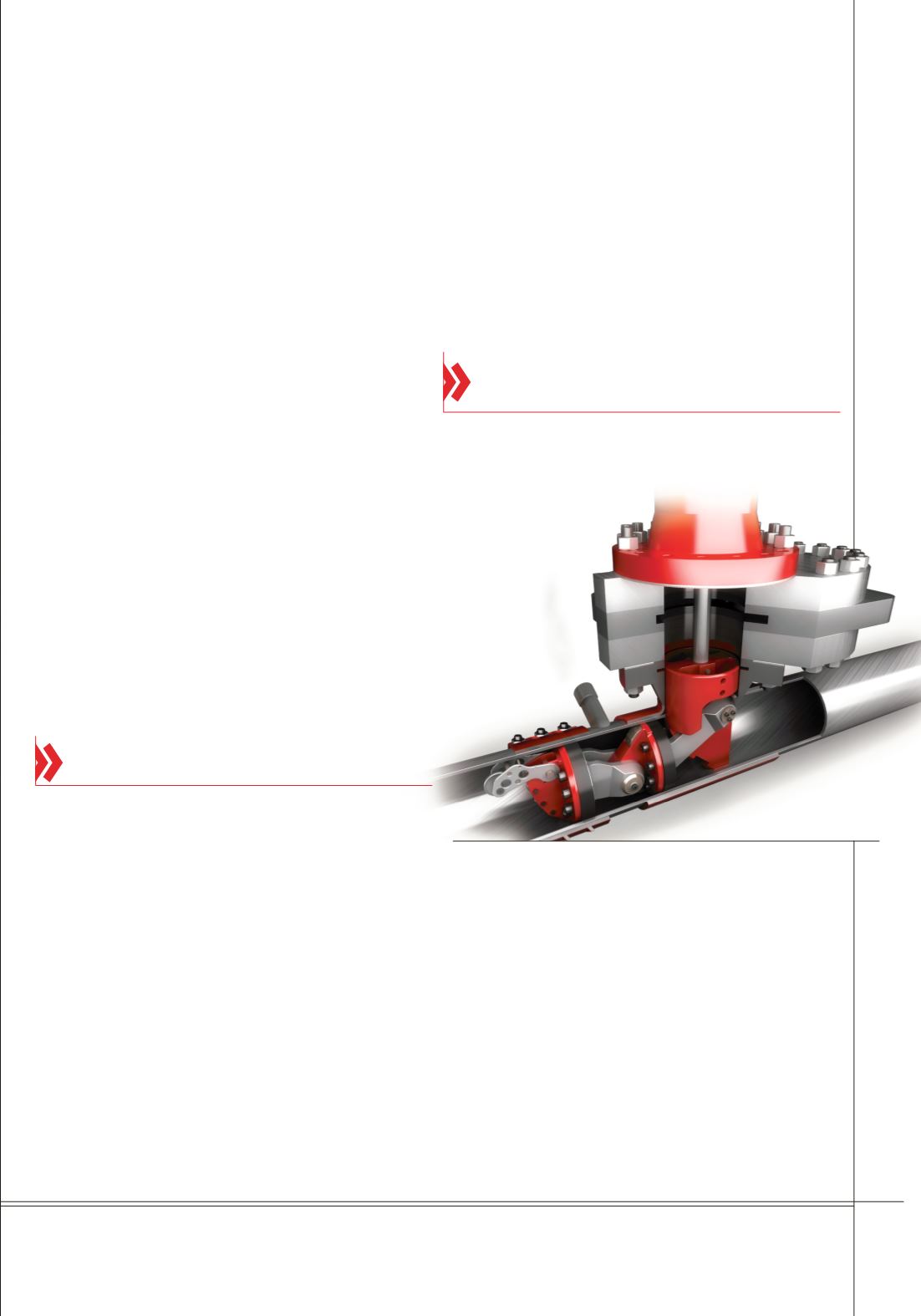
I N N O V AT I O N S • J A N U A R Y -
M A R C H 2 0 1 4
11
The world is getting older, and so is our
infrastructure. According to the U.S. Pipeline and
Hazardous Material Safety Administration (PHMSA),
in the United States alone, nearly half of all interstate
transmission mileage was installed between 1950 and
1970. That translates into hundreds of thousands of
miles of 60-year-old lines crisscrossing the country.
Like the age of our average citizen, the age of our
average pipeline is increasing. Somewhat surprisingly,
the technology called to task to address both issues is
markedly similar.
For instance, doctors can prescribe better-fitting,
more customized splints and braces because of newer
materials used to create them. Cardiologists can offer
patients less invasive coronary bypass procedures, and
physicians from virtually every medical specialty now
rely on non-invasive imaging tools such as MRIs and
ultrasounds. Many of the same advances are being
used in pipeline engineering: advances in material
science help keep our pipe joints strong, “bypass”
STOPPLE
®
operations keep pipelines flowing as key
maintenance is performed, and pipeline integrity
testing is rooted in the same imaging technology
used every day in hospitals.
It’s amazing that seemingly niche techniques are
actually so ubiquitous.
AUTOMATING TREATMENT
Let’s begin with pigging. As we see a projected
increase in new gathering lines in the years ahead, so
too will we see an increase in lines that are piggable.
Reasons vary, including anticipating regulatory
action by PHMSA that calls for gathering line
integrity inspections – integrity inspections can only
be performed on piggable lines.
TDW has developed and is testing the
SmartTrap
®
Automated Sphere System, or
AutoSphere, an automated pig launcher that
deploys spheres to clean lines daily so that liquids
and debris can be removed, production optimized
and NGL condensates extracted. It uses the
same Programmable Logic Controller (PLC) –
an automation technology – found in TDW’s
AutoCombo system, used in pigging trunk lines.
Operating much like the pumps that deliver
pre-measured doses of insulin or chemotherapy
drugs, the PLC allows users to program the remote
automated launch of seven to ten spheres sequentially
at designated times and intervals. Benefits to using
automated pigging launchers include improved
routine maintenance of the lines, as well as avoiding
costly operating interruptions caused from the
buildup of impurities.
SEEING IS BELIEVING:
ADVANCED IMAGING TECHNIQUES
As the medical community has increasingly relied on
advanced imaging techniques
for better detection and
treatment, so too,
has the pipeline
industry. One
of the earliest
innovations in
this category was
the inspection
pig. Fairly crude
by today’s
standards, the
early fleet of inspection pigs gave operators their
first real glimpse inside a pipeline. This technique
provided never-before-available information about
the integrity of their lines. Operators received
information about dents, deformations and other
potential problems that were electronically scrolled
on paper rolls.
Because of automation advancements, improved
access and other technology developments evolving
at breakneck speeds, today’s “smart pigs” perform
and deliver results at previously unimaginable levels.
Consider Magnetic Flux Leakage (MFL), for
example, which also has a feature in common with
a medical imaging counterpart, the MRI. Both
>
STOPPLE®Train Plugging System


